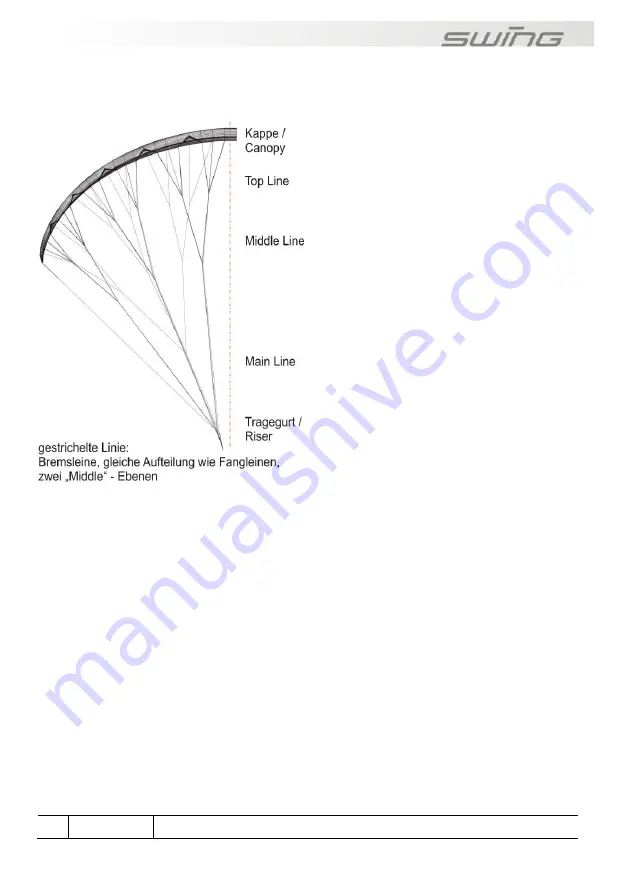
14
Section 3
Technical description
03 Technical description
General layout illustration
TWIN RS
– BI different
The TWIN RS sees SWING take a
completely new approach in the technical
design of paragliders made for tandem flight.
For the first time the RAST system is being
used for a tandem glider. This has made it
possible for our R&D team to utilise the
advantages of a larger surface area, and
there are marked improvements when it
comes to launch behaviour, speed, stability
and handling.
The RAST technology means that the
glider’s launch behaviour is very harmonious
and forgiving, so there is no stress even if
the conditions are unfavourable and/or the
passenger is hesitant in the launch run-up.
The take-off speed stays low even with
maximum load, which makes the launch run-
up easier. What is most noticeable is that
RAST makes launch behaviour simpler when
there is a tailwind or no wind.
Once in the air, you will be impressed by the
TWIN RS’s sensational climb rate even when
conditions are light. If there is ever any
turbulence, RAST ensures extremely high
canopy stability and additional safety.
It is no exaggeration to describe the flare
characteristics of the TWIN RS as
outstanding and they make a gentle landing
a piece of cake.
Line system
The TWIN RS has A, B and C- line levels,
which fork twice from the bottom (riser) to the
top (canopy) and which are divided into
main, intermediate and top lines. The
individual line levels are connected with one
another using the “handshake knot” (loop to
loop knot).
The Maintenance and Service book has a
detailed line connection plan, showing the
individual levels, connections and line
descriptions.
With the brake lines, the individual levels are
bundled at the end with the main brake line.
This runs through the brake pulley on the
riser and is knotted at the brake swivel of the
control handle. There is a mark on the main
brake line which allows the control handle to
be correctly positioned.
The main lines are all attached to the risers’
Maillon quick links. They are fed through
special elastic rings and attached to prevent
the lines from slipping and to ensure that
they stay in the correct position
.
dotted line:
brake line, same distribution as rigging
lines, two “middle” levels
Fig. 1:
TWIN RS CAD-design





























